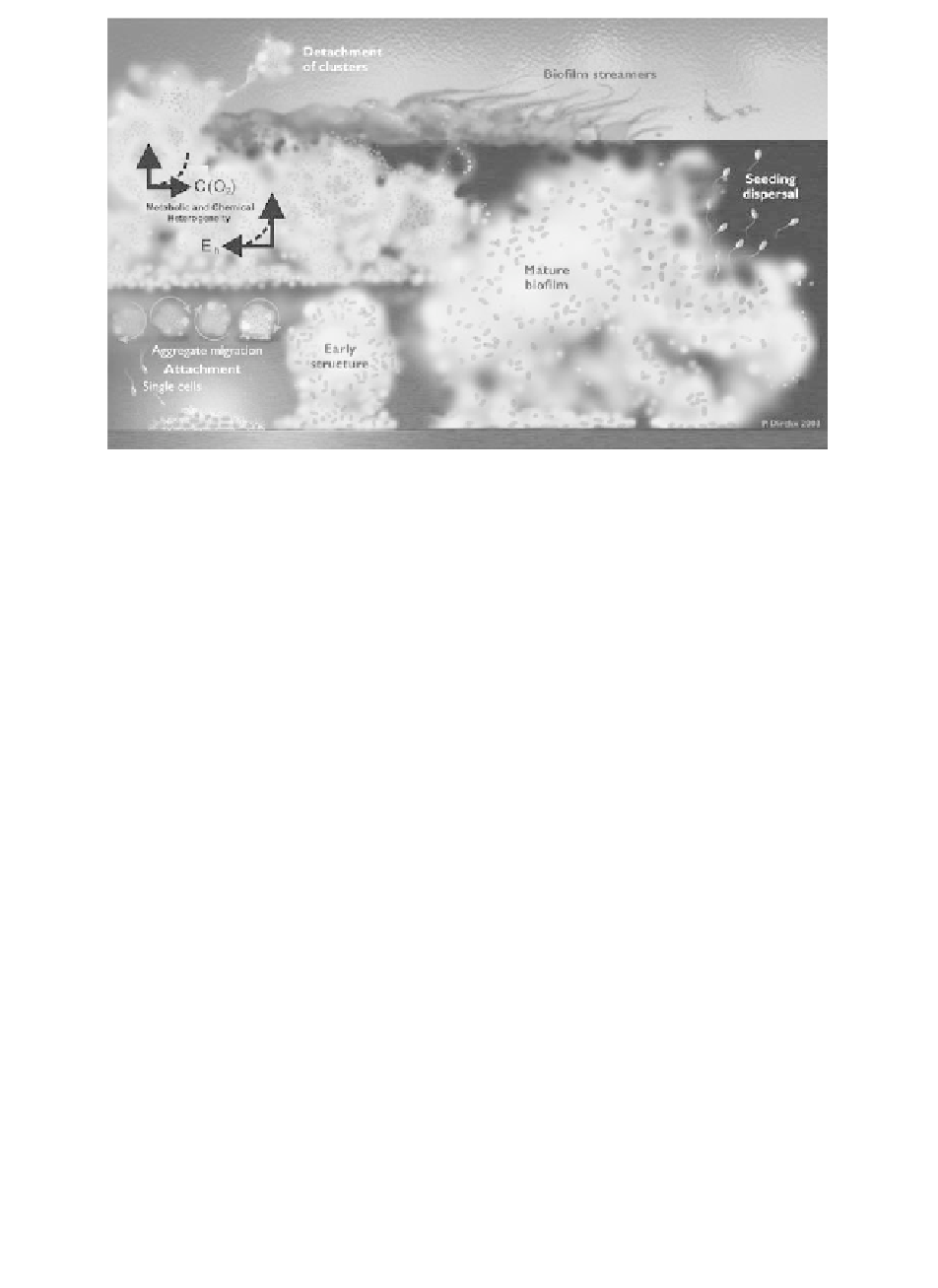Biomedical Engineering Reference
In-Depth Information
FIGURE 5.1
Schematic of the life cycle of a biofilm. Starting on the bottom left, attach-
ment; growth and development of biofilm structure (bottom center); and fully
developed biofilm with detaching cells (bottom right, in this case through seed-
ing dispersal). Top: developed heterogeneous biofilm. Different shades within
the biofilm indicate differences in physicochemical conditions (e.g., pH, con-
centration of nutrient, availability of electron acceptors, etc.). Throughout,
mechanically induced stress and strain (e.g., through fluid flow) can cause
detachment of clusters, aggregate migration, streamer formation, as well as
single cell detachment. Detached cells can colonize surfaces elsewhere to form
more biofilm.
5.2.1 Microbial Transport and Attachment
In most situations, if a surface is present, microorganisms tend to attach and
make the transition from the planktonic to the attached (sessile) state. The
mechanisms and kinetics of attachment in porous media are most frequently
described using the colloid filtration theory (Yao et al
.
1971). The removal of
microorganisms from the flowing fluid has been found to be governed by a large
number of parameters, including the properties of the microbial cells, solution
chemistry, porous media characteristics, and hydrodynamics. This chapter
provides only a brief overview of the parameters and conditions influencing
microbial transport in porous media. More detailed reviews are provided, for
example, by Bouwer et al
.
(2000) and Ginn et al
.
(2002), and the reader is
referred to these publications as well as the references therein.

Search WWH ::

Custom Search